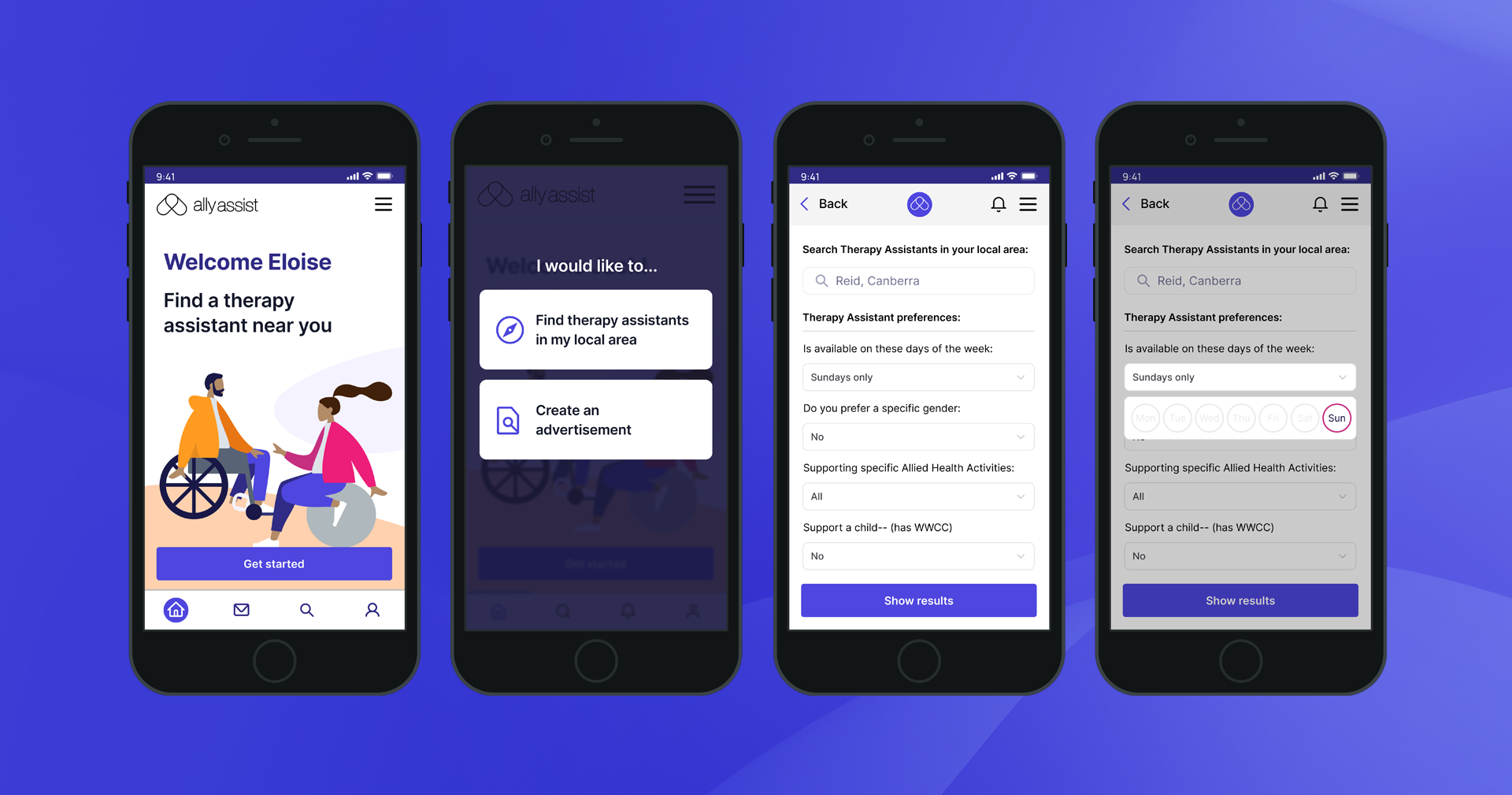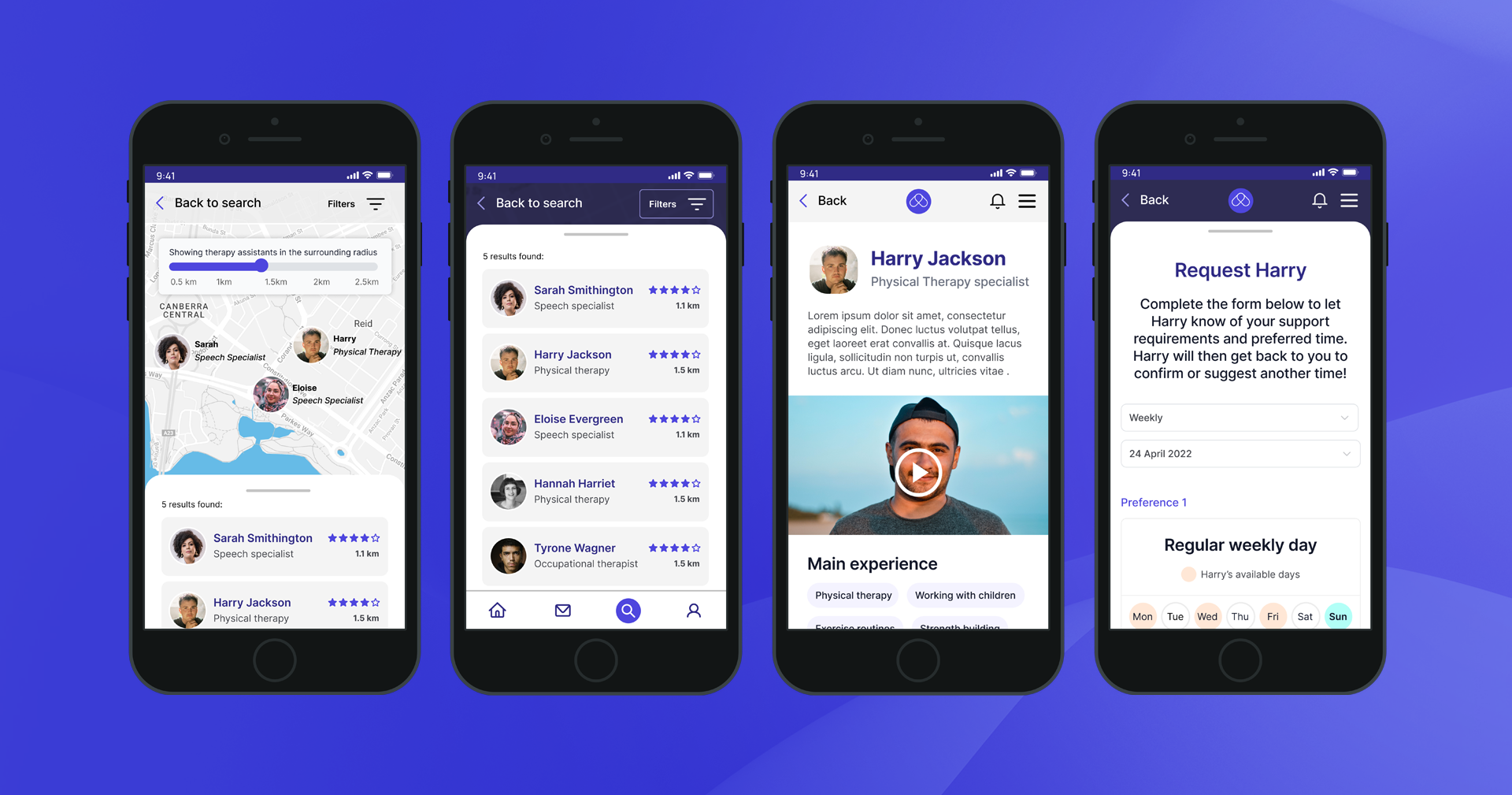Setting the scene
Ally Assist is an online marketplace that allows people living with a disability to find and work with allied health workers (Speech pathologists, OT’s, physiotherapists as well as allied health assistants). Signing up to Ally Assist helps carers get more out of their NDIS budget by working with student health workers (who are supported by the carer's own allied health professional).
After signing up to the program, allied health workers apply to work with the user. The application is only valid for a period of 10 days so as not to tie up the allied health worker's availability (when they could be helping other clients).
For some reason, even though clients appear desperate to be linked with an allied health worker, many are not taking action on worker applications, leading them to expire.
Ally Assist wanted to understand why our users are not taking action on worker applications and implement a solution that better facilitates a match.
Problem statement
Client or client managers who feel unsure about accepting a therapy assistant, want to have a clearer understanding of the service they are being offered but face time constraints which causes their applications to expire
Research objectives
In general we wish to understand why Ally Assist users are not taking action on Therapy Assistant (TA) applications. To do this we will be investigating:
Any difficulties / blockages in the current user flow / matching process (according to both users and AA staff)
Insights from users on how this flow might be improved
If the supporting communication within the process is adequate or too overly complex
Research plan
As a team of 4 designers, we established that the most appropriate research methods for this project were as follows:

UX review
We reviewed 4 organisations that had different onboarding procedures and in some cases, had to deal with legal requirements / categories that could potentially get bogged down with red tape.
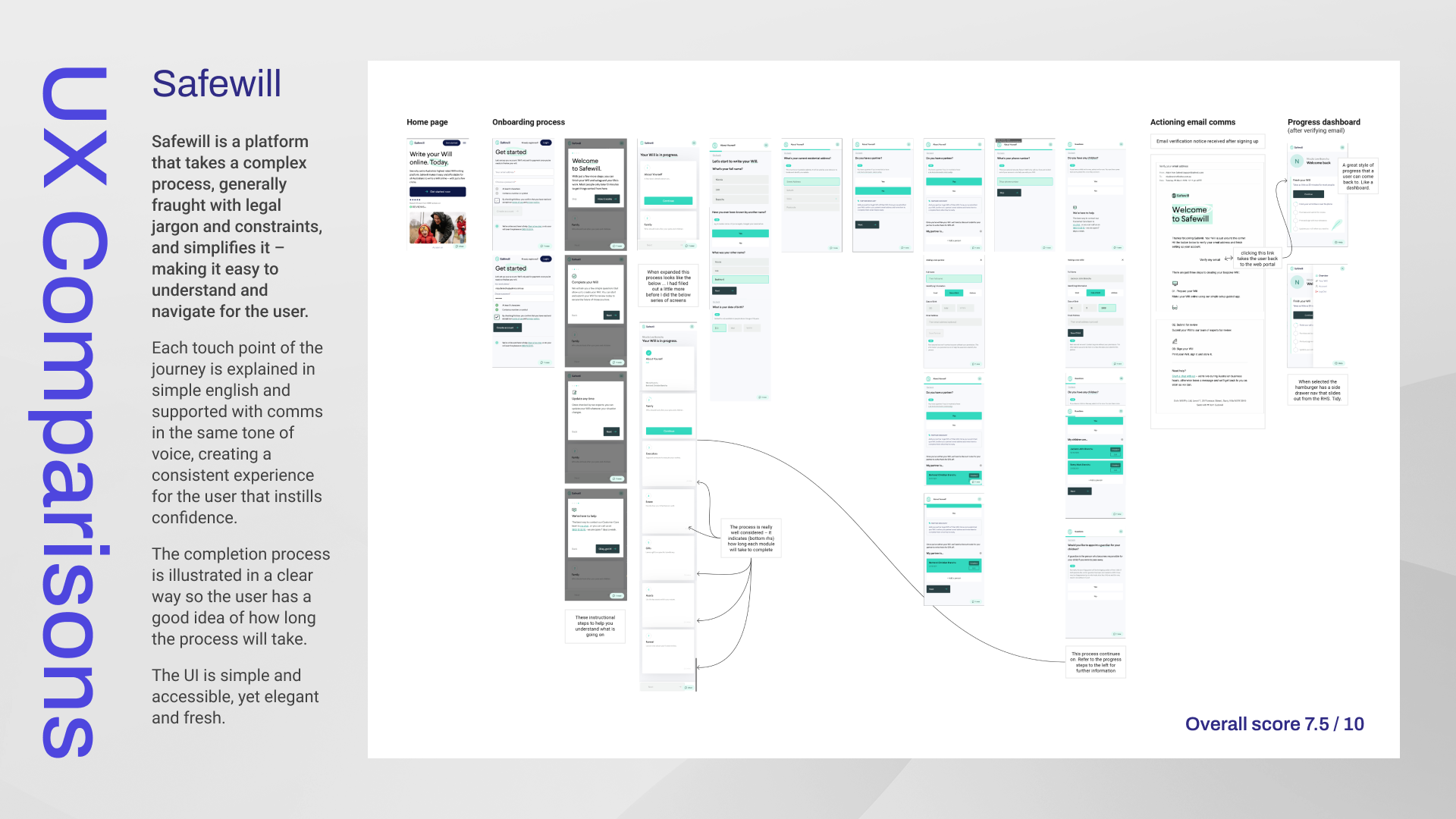
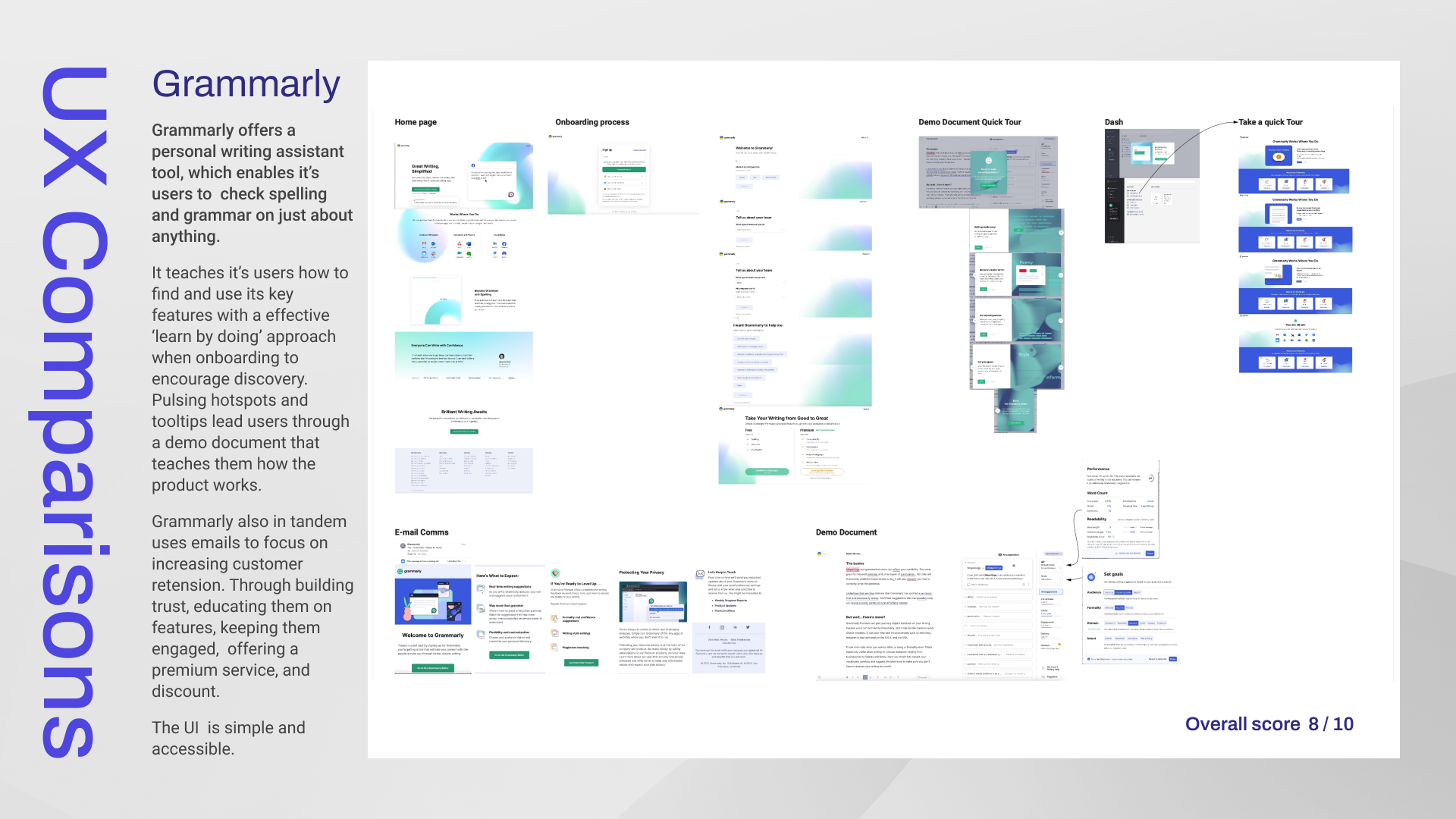
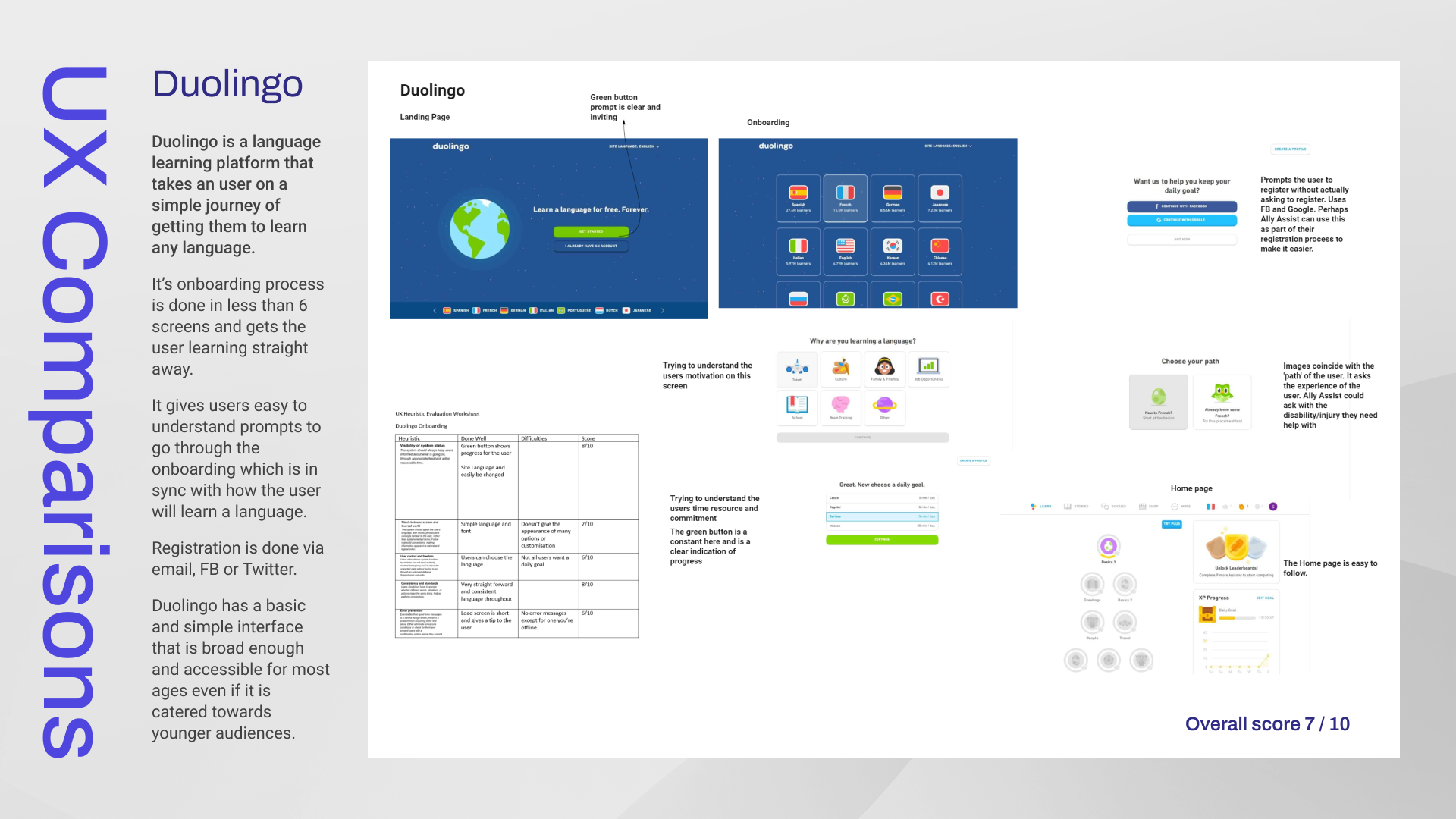
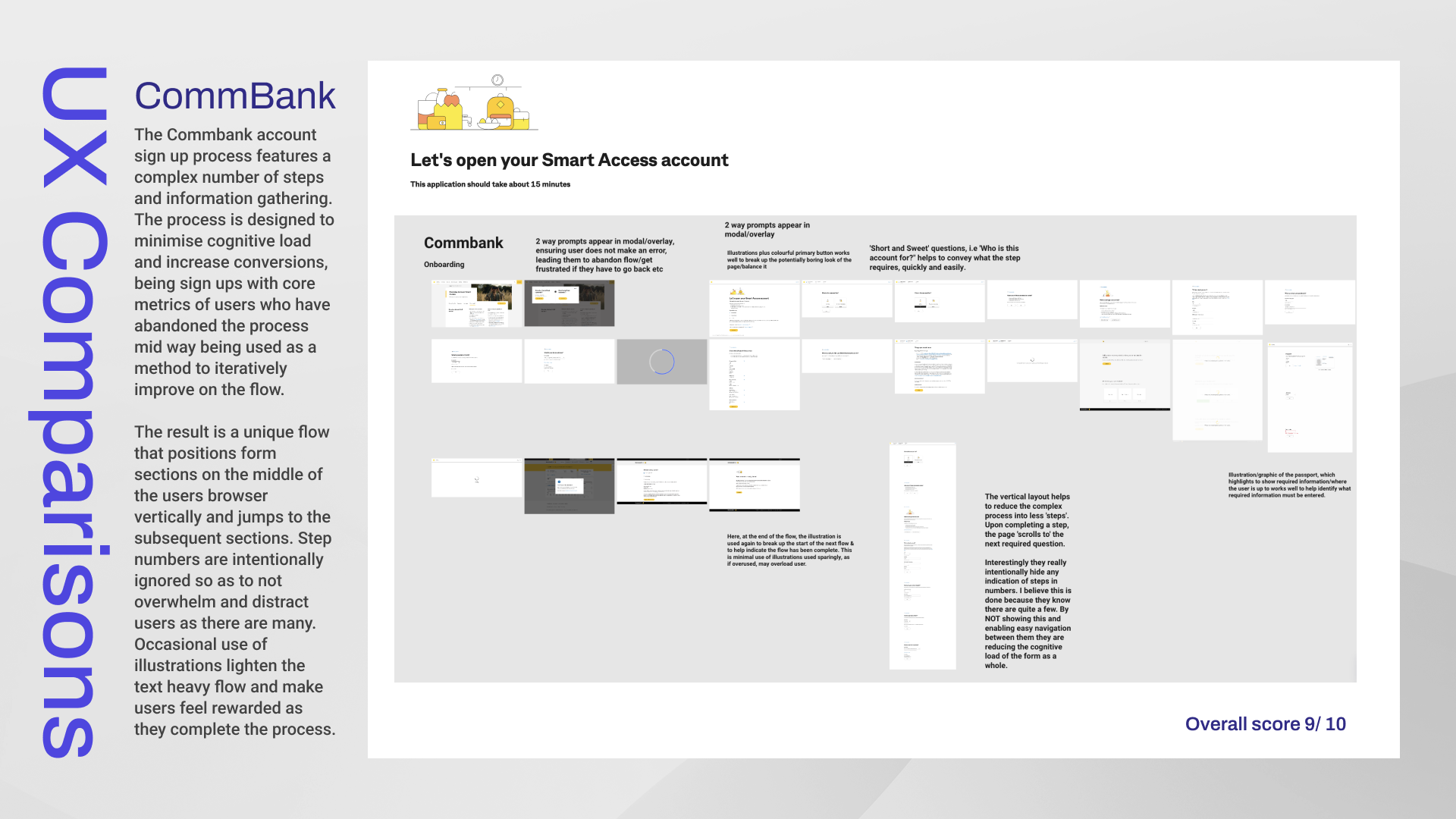
Contextual enquiry
We interviewed the head of customer services at Ally Assist to walk us through the current user flows of both the onboarding procedure and the matching procedure to get her insights and find out where she felt the pain points were. We included all of her comments and observations in our Affinity Map.
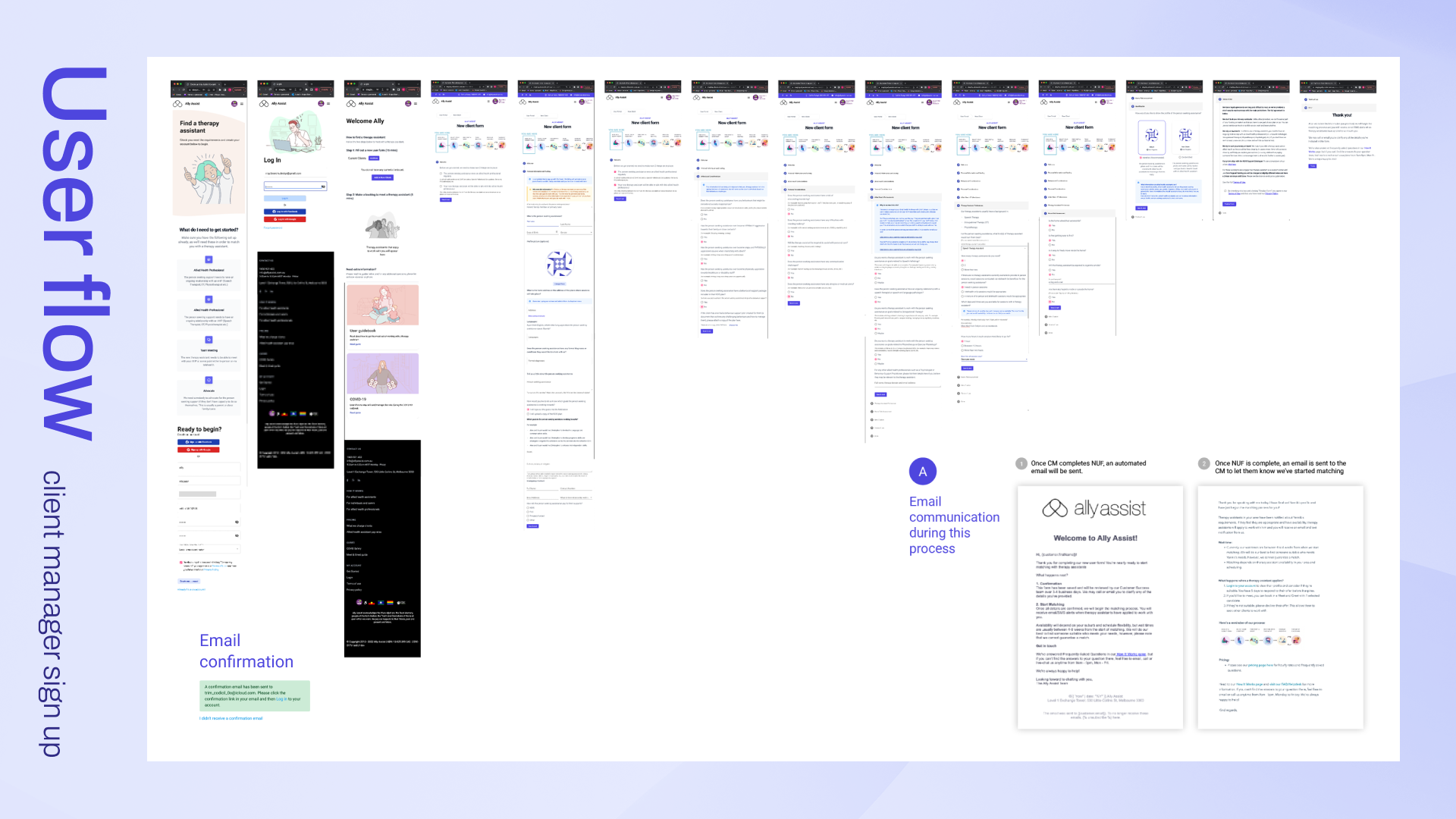
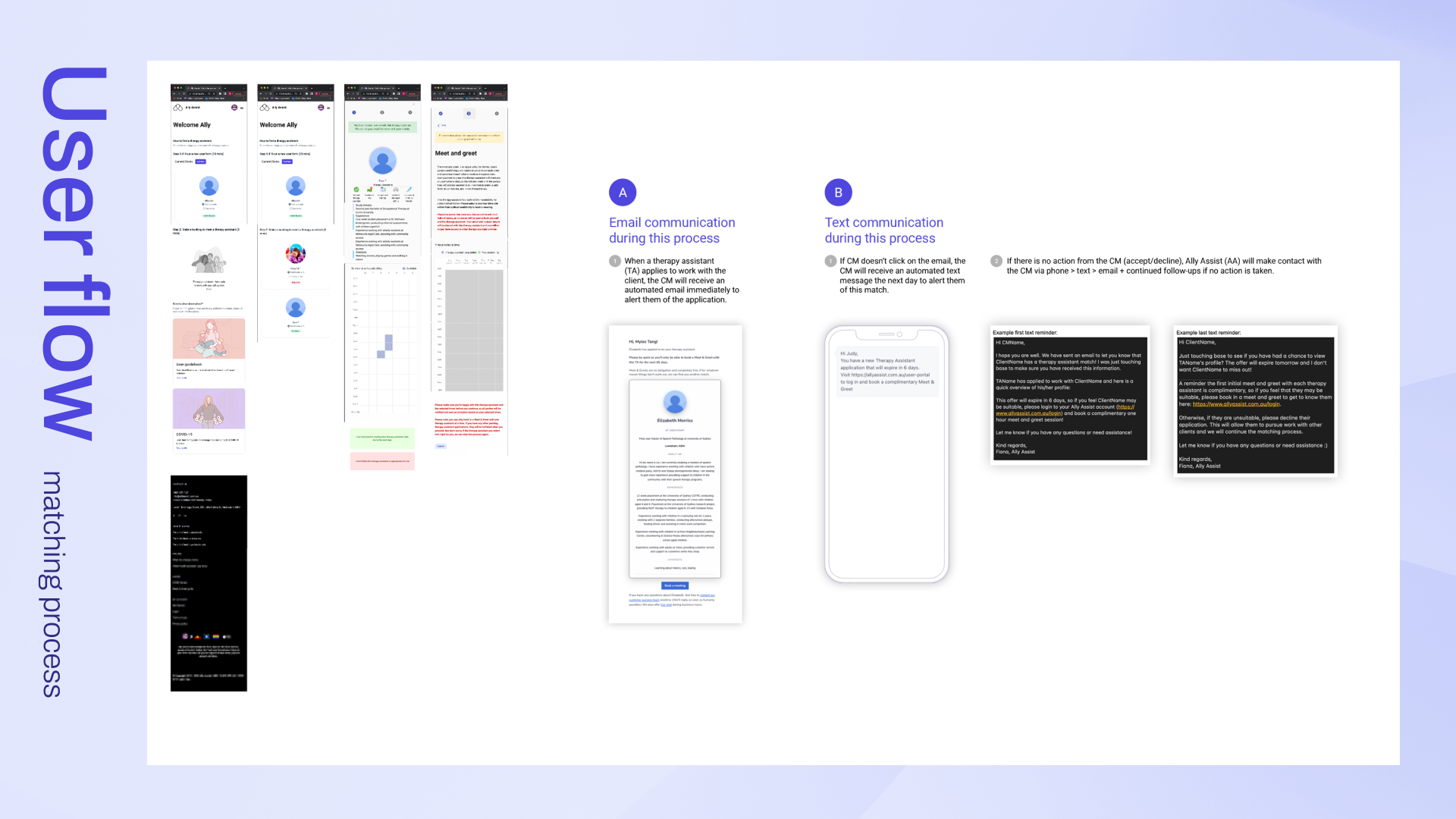
Who did we talk to?
We spoke with a number of client managers who had experience with the Ally Assist platform and tried to get a picture of their needs and wants.

Synth the research
This is the Affinity Map that we compiled from the interviews that we conducted from open to closed sorting. We split the results into the following:
The background of the clients; selection criteria of the therapy assistants; expectations of Ally Assist as a service; the time it takes to get enrolled; the experience of the onboarding; matching process; scheduling of matches; accepting of matches; rejecting matches; the problems and pain points such as time, choice of the therapy assistant, communication, funding knowledge and availability; and suggestions for Ally Assist.
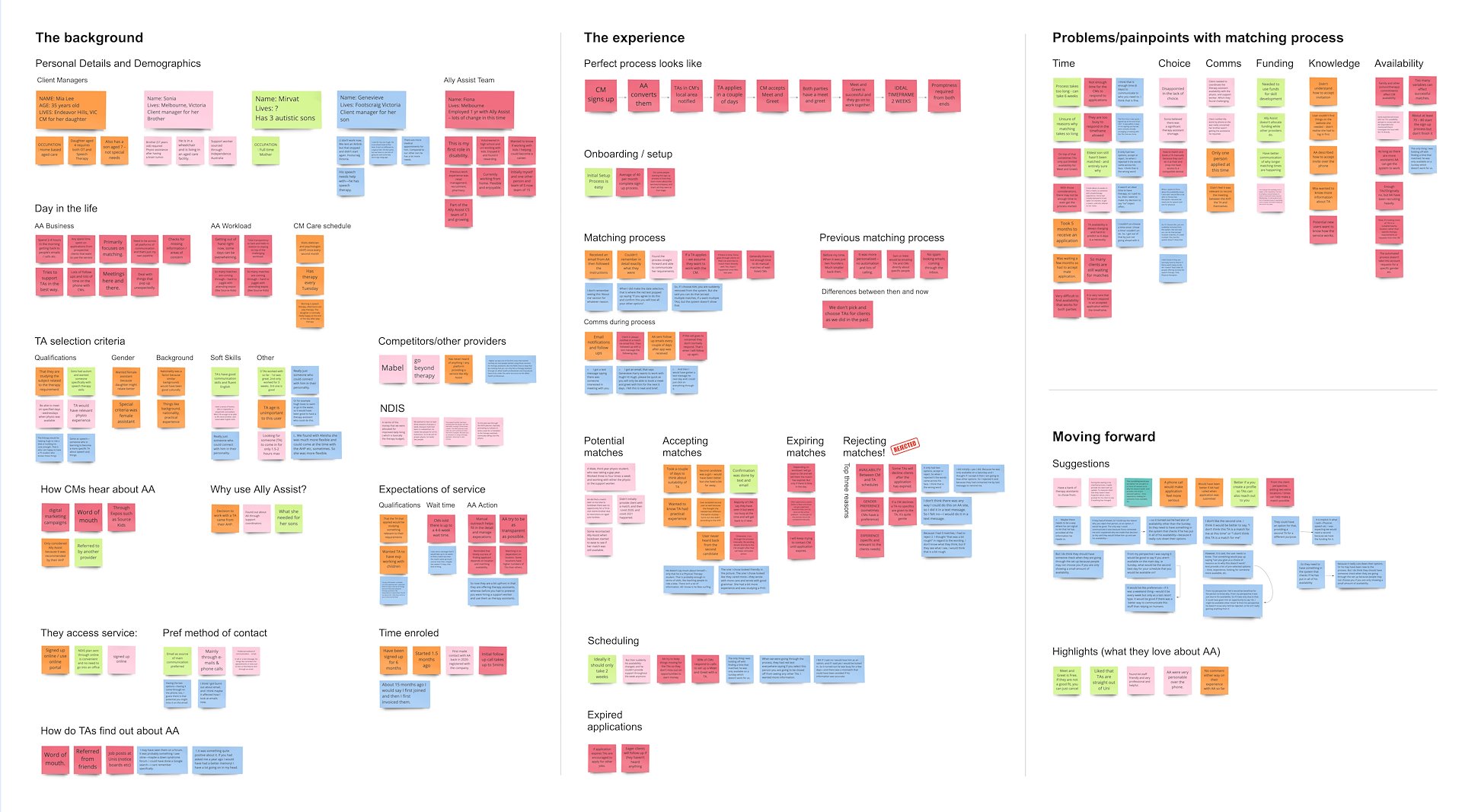
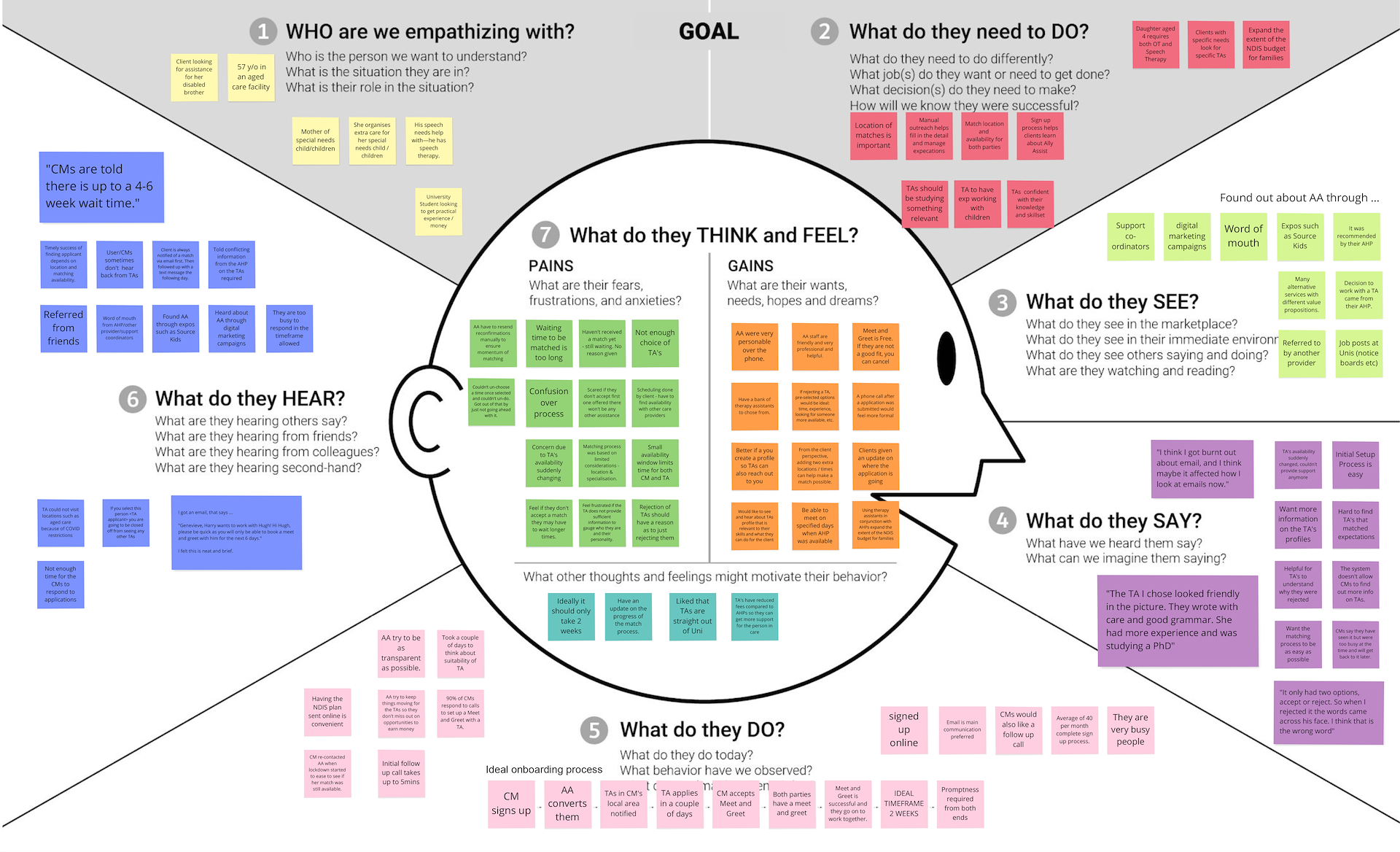
Key insights
Our research and synthesis found the following key insights:
The initial matching process was easy for most client managers but could be more simplified and formalised with a follow up call
Availability between Therapy assistants and client manager was an issue and had long times between finding suitability for both parties
Client Managers wanted the ability to choose the gender of their TA
TA soft skills (communication and personality) were also taken into account for Client Managers
Email was primary mode of communication but follow phone calls helped
Currently there are no reasons given as to why clients were turned down/rejected or no option to do so
Adding location and times from both client and the Therapy assistant would help improve matching and availability
Giving reasons for both the client manager and the Therapy assistant on the matching time frames, reasons for acceptance/rejection would help with the transparency of the matching process
Client managers feel the system should provide an option to convey reasoning behind the match being declined to give them an opportunity to re-assess availability or answer further questions that could mean they are a suitable match (eg, schedule changes etc).
Client managers want to be able to gauge the level of personality match between the therapy assistant and the person in care and often client managers won’t proceed without this.
Client managers sometimes do not like rejecting matches as it can feel ‘harsh’. They feel there is an opportunity to select from key reasons as to why they did so as to ensure the Therapy assistants are able to improve their chance at obtaining new clients and have visibility over the process.
How might we?
How might we streamline the existing onboarding process to make it easier to complete & find a suitable therapy assistant so that the rate of successful matches can be increased without the need for manual intervention.
Ideation
We learned from our research that client managers (who are often busy parents) have to endure a huge cognitive load – so our objective was to try to make the matching process as easy and pain free for them. With that in mind, we ideated on solutions that were to the point and simple.


The team’s Crazy 8's
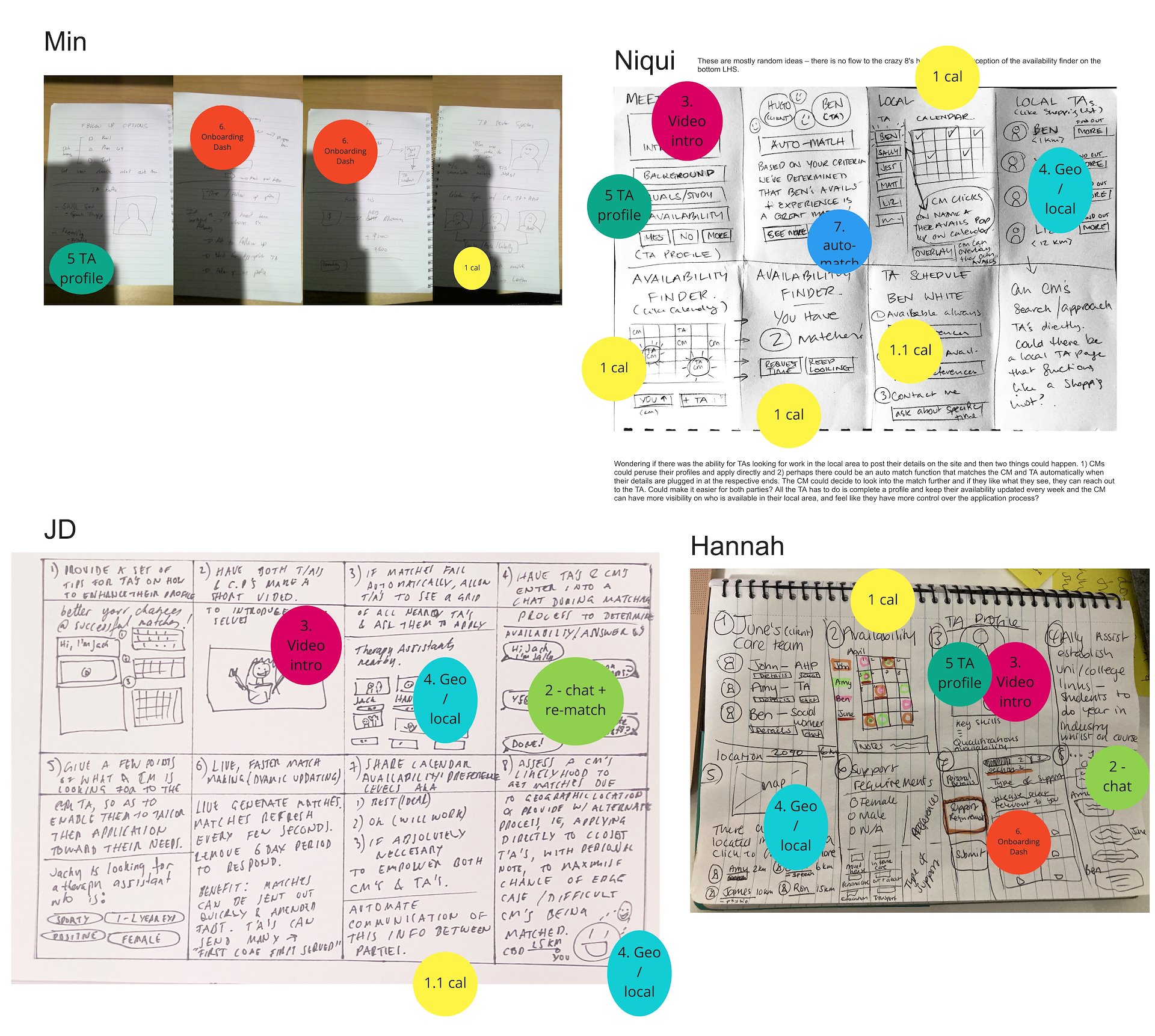
Dot voting
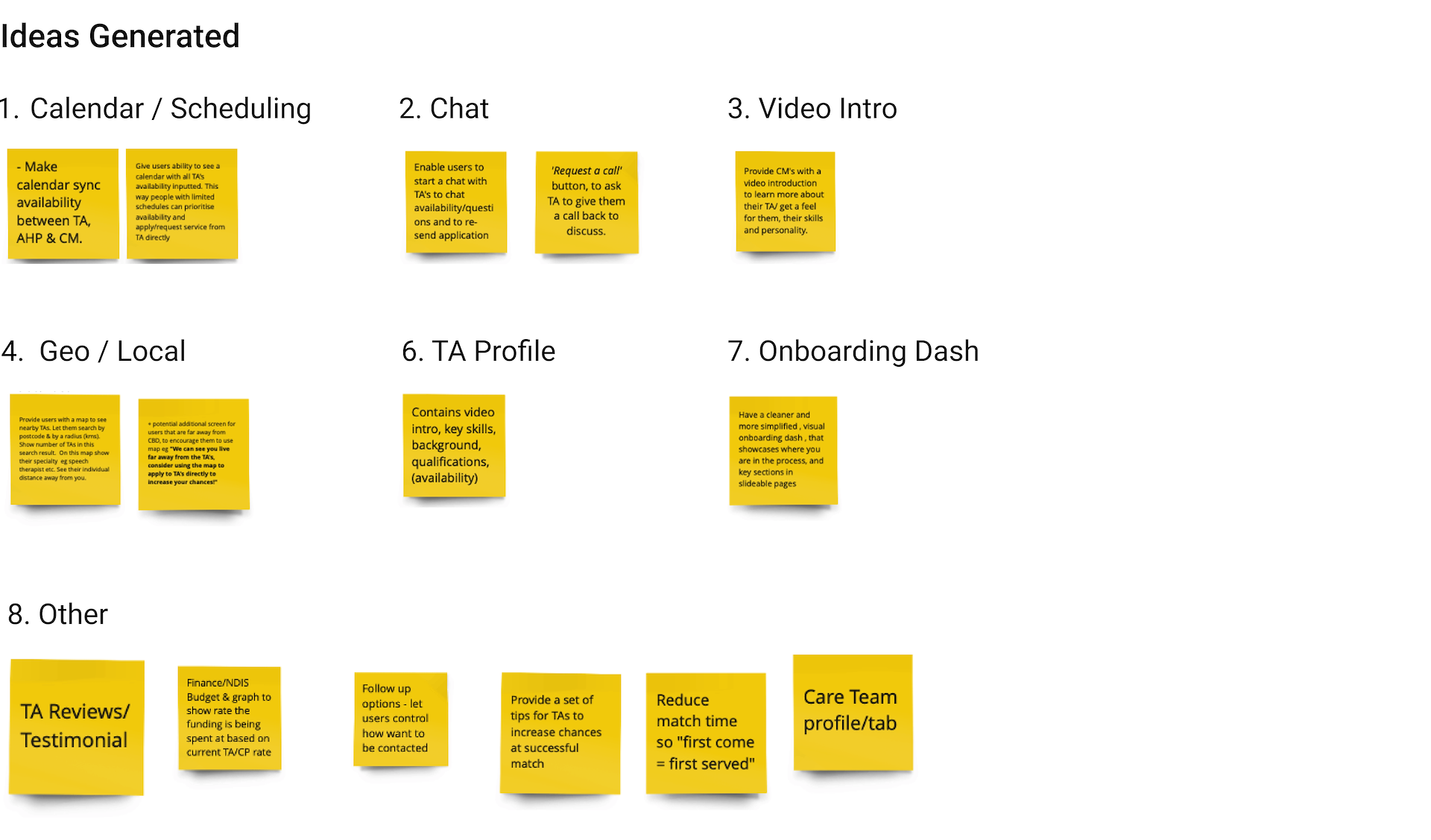
Card sorting
MVP
We identified a lot of quick wins in our MVP which was going to be fantastic heading into further development of the product.

User flow
One of our time saving ideas was to have a user flow whereby the client manager (CM) could search for a therapy assistant (TA) themselves, rather than waiting for a therapy assistant to apply to work for them.
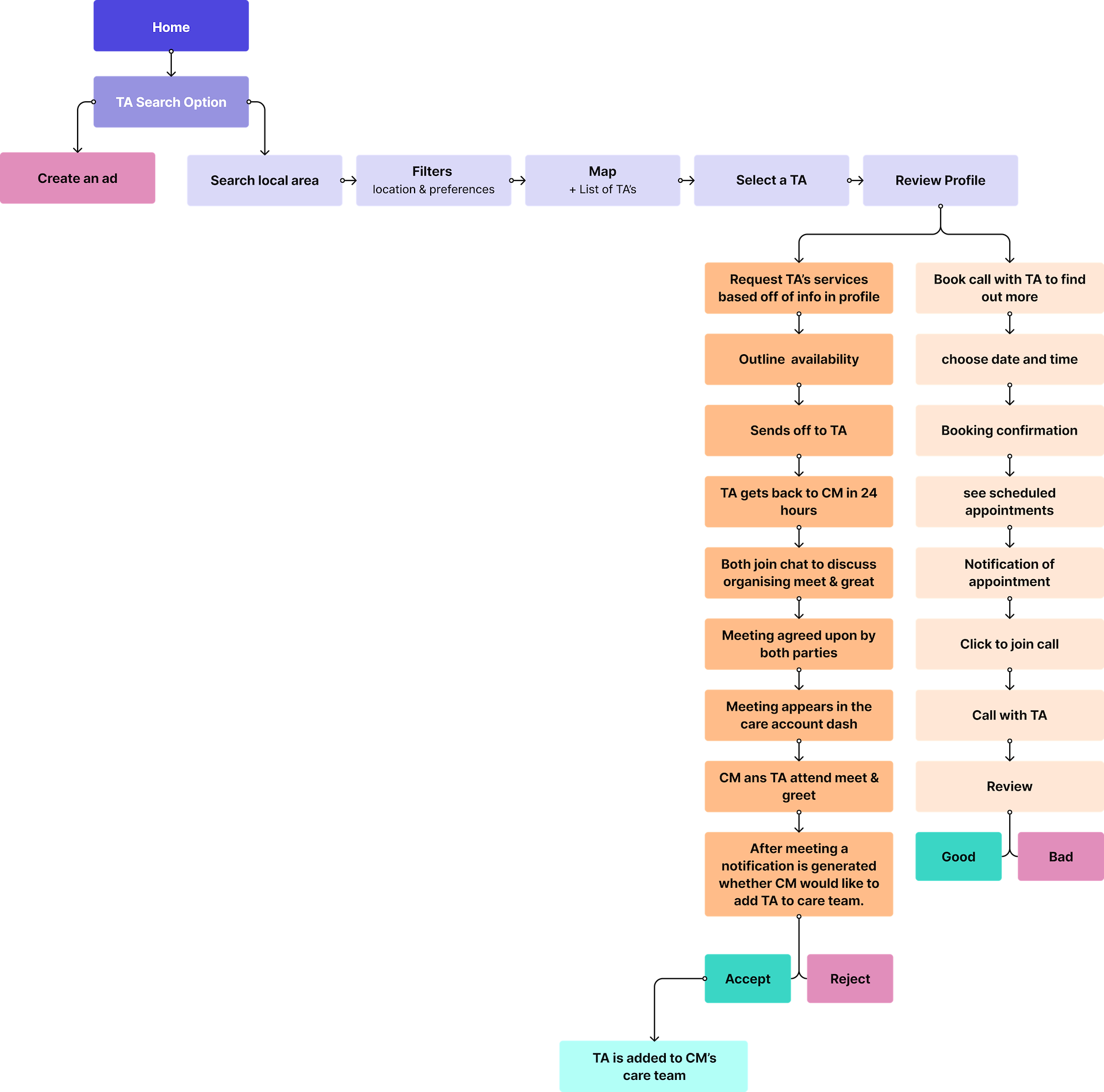
Sketches
Another thing the research threw up was that location was a critical component in the success of a match. As part of the user flow where a CM is searching for a TA, we included a map function which would be able to show the user who their nearest therapy assistants were. Availability between both parties was also a huge factor, so we ideated on simple ways to overlay calendars to try and take some of the back and forth out of the process.
Lastly, as this service is designed to help carer's NDIS budgets extend further, we wanted to include a budget status widget somewhere, so the user was aware how much money they could spend on additional therapy.

Initial sketches
Iteration 1
Focused on determining how might the search and request TA functionality might work and ironed out usability issues with the map interaction.

Iteration 2
Focused on further developing the search and interactions – improving usability & began to flesh out the steps that would occur after an affirmative response from the TA.

Iteration 3
Focused on determining how the chat interaction flow would function.
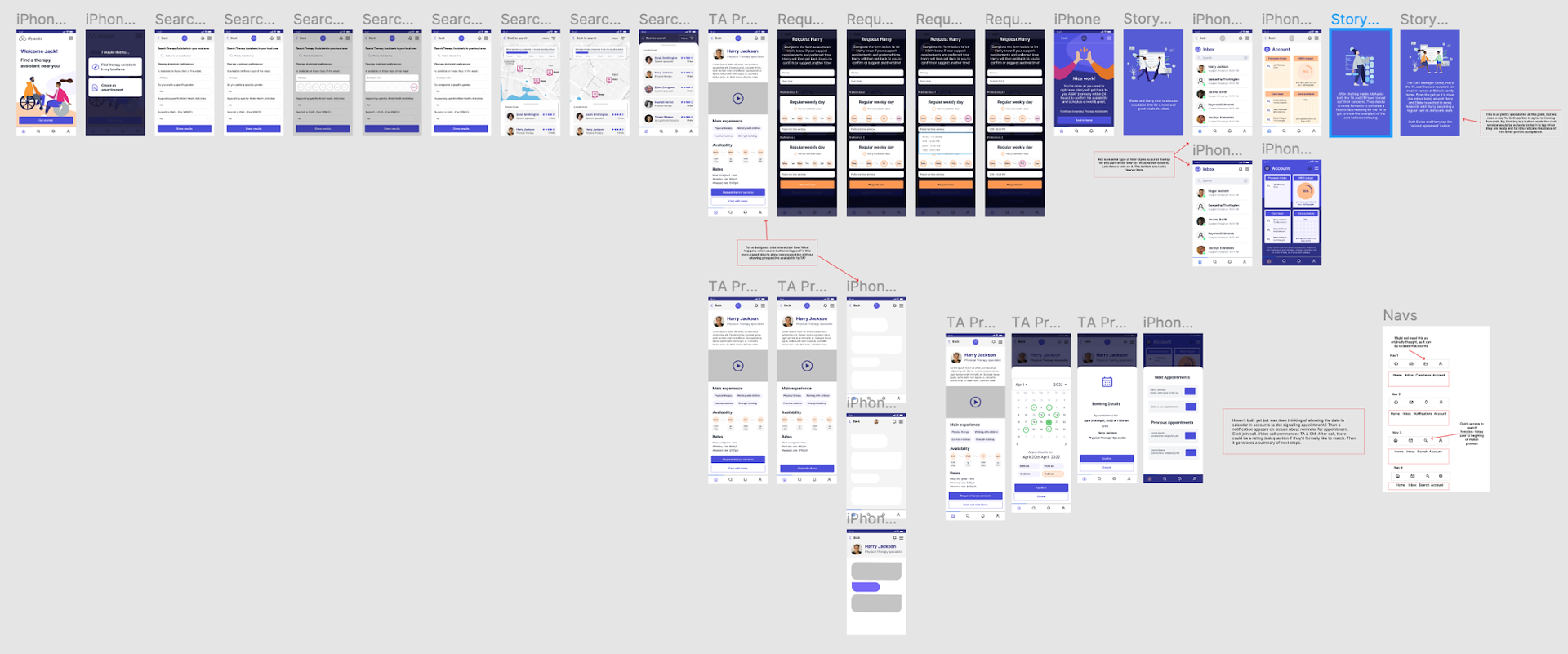
Iteration 4
Focused on determining the way in which a CM would approve a TA to join their team post interview and how the in-app video call functionality would work.

Hi-fi prototype
Drive it like you stole it! I’ve embedded the high fidelity clickable prototype below.
Please note: we only built out the onboarding flow and the matching process.
User testing
+ 3 usability interviews conducted
+ Ally Assist User, Design Researcher and Disability Sector Manager
+ Users were based in Australia and New Zealand
+ Budget amount was important for users
+ Rating system for TAs was useful
+ Having a map of nearby TAs gave CM's a better idea on who was available
+ Users are busy and want to make decisions quickly
+ Calendar sync was important, users want the option to have appointments sync with iCal or Google Calendar
+ Users like having the options to 'try before buying' their TAs
+ Credentials for the TA were important
+ Selecting a TA came down to trust and confidence
Killer quotes
“I like that you can essentially try before you buy”
“Being conscious of time, we’d want someone who is nearby”
Conclusions
It is recommended that Ally Assist demonstrate the credentials of the TAs and opportunities to showcase their communication skills and personalities.
Having a profile of the TA helps from the get go if the user wants to know more and request their services straight away.
Giving credentials, availability, location and rates of a TA helped alleviate the users concerns and gave greater confidence in their decision making.
TAs should be given the option to add self proclaimed badges like LBGTQI+ friendly, pet friendly etc and the ability to add a video to build that trust and confidence and to remove decision fatigue.
Not all users have English as their first language so having a language option would also help
Decision making for client and client manager should be made easier by giving that information in an easy to understand visual or text
It is recommended that Ally Assist have a privacy option between care team members contact details and their ability to view any notes that a TA might have recorded
Also get the TA’s point of view on what they require from the client to make matching even more easier

